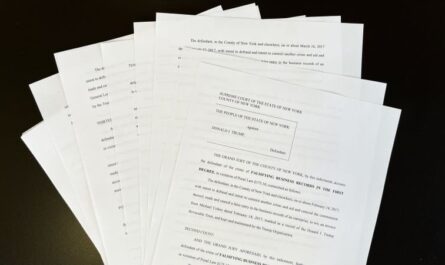Introduction
Defamation lawsuits are legal actions taken by individuals or entities to protect their reputation from false or damaging statements. When someone makes a false statement about you that harms your reputation, you may have grounds for a defamation claim. In such cases, proving that harm was done to your reputation is a critical part of the lawsuit. Here’s an overview of how to prove harm to your reputation in defamation lawsuits.

What Is Defamation?
Defamation refers to false statements made about an individual or entity that damage their reputation. These statements can be in written form (libel) or spoken (slander). To succeed in a defamation lawsuit, the plaintiff (the person suing) must generally prove the following:
- The statement was false.
- The statement was communicated to a third party.
- The statement caused harm to the plaintiff’s reputation.
- The defendant was at fault (negligence or actual malice).
Proving Harm to Your Reputation
One of the most significant elements in a defamation case is proving that the defamatory statement harmed your reputation. There are various ways to establish this harm, and courts will typically look for evidence of the following:
1. Loss of Professional or Personal Relationships
A defamation claim can be bolstered if the plaintiff can demonstrate that the defamatory statement led to a breakdown in professional or personal relationships. For example, if a false accusation led to a loss of clients or severed family ties, it can show harm to one’s reputation.
2. Economic Loss
Another strong indicator of reputational harm is financial loss. If the defamatory statement resulted in lost job opportunities, diminished income, or a decline in business, this can serve as direct evidence of harm. Evidence of economic loss, such as a decline in sales, customer base, or employment status, can strengthen a defamation case.
3. Psychological Impact
Harm to reputation can also manifest in emotional or psychological damage. If the defamatory statement caused anxiety, depression, or stress, the plaintiff may show that the impact was more than just social or economic. Medical records, therapy reports, or testimonies from mental health professionals can provide evidence of such harm.
4. Public Perception
The defamation lawsuit may focus on how the defamatory statements have altered public perception. For example, if the statement was widely circulated and led people to form a negative opinion of the plaintiff, this can demonstrate reputational harm. Evidence of public perception changes can come from social media posts, media coverage, or witness testimony.
5. Loss of Social Standing
A defamatory statement can lead to a loss of social standing, especially in close-knit communities. This can be particularly relevant in cases involving slander. Testimonies from neighbors, friends, or colleagues who can testify about the negative impact on your social relationships can help prove harm.
6. Negative Media Coverage
If the defamatory statement was published in the media or widely disseminated online, it may lead to a tarnished public image. Evidence such as news articles, blog posts, social media posts, and other published content can help show that the statement had a broad impact on your reputation.
Proving the Falsity of the Statement
While proving harm to reputation is crucial, the plaintiff must also prove that the statement was false. This often involves showing that the statement was not based on facts or that the defendant made it with reckless disregard for the truth. If the statement was an opinion or a statement of fact that could be proven false, it is more likely to result in harm.
Rebutting the Defendant’s Defense
In defamation cases, the defendant may argue that the statement was true or that it was an opinion rather than a fact. Some common defenses in defamation lawsuits include:
- Truth: The defendant may argue that the statement made was true, and truth is a complete defense to defamation.
- Opinion: The defendant may argue that the statement was an opinion, not a fact, which is typically protected under the First Amendment.
- Privilege: The defendant might claim that the statement was made in a privileged context, such as during legal proceedings or in government reports.
If the defendant claims that the statement was an opinion or protected speech, the plaintiff may need to show that the statement was presented as a fact and that it was false.
- Document the Defamation: Save copies of any defamatory statements, whether written or spoken. This can include screenshots, recordings, or written statements.
- Gather Evidence of Harm: Collect evidence that shows how the defamatory statement has harmed your reputation, such as loss of business, social relationships, or psychological harm.
- Consult an Attorney: A defamation lawyer can assess the case and guide you through the process of filing a lawsuit. They will help gather the necessary evidence to prove harm.
- Consider Cease-and-Desist Letters: In some cases, sending a cease-and-desist letter demanding the removal of defamatory content can lead to a resolution without a lawsuit.
Conclusion
Proving harm to your reputation is a critical part of a defamation lawsuit. By showing how the defamatory statement impacted your professional and personal life, you can strengthen your case. Gathering evidence of lost opportunities, financial losses, psychological effects, and changes in public perception can all play a role in proving that your reputation has been damaged. Working with an experienced defamation attorney is crucial in navigating the complexities of the case and ensuring that justice is served.


